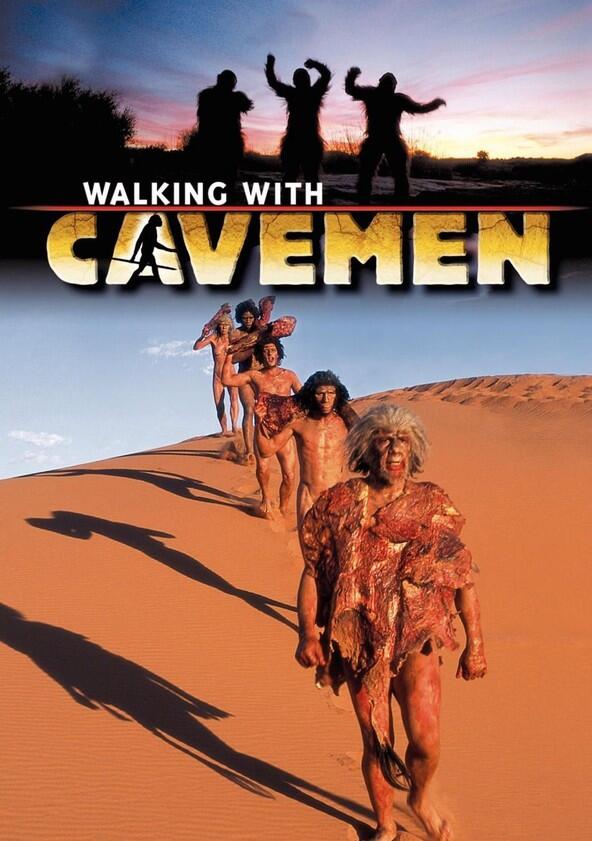Walking with Cavemen - Season 1

Season 1

Episodes

First Ancestors
In the first episode, we see Australopithecus afarensis, and focus on their evolved bipedality. The story follows the famous Lucy and her relatives, as they first develop a leadership conflict following the death of the alpha male due to a crocodile attack, and then are attacked by a rival troop. The attack ends with the death of Lucy herself, and her eldest daughter caring for Lucy's now-orphaned baby sibling, as a sign of the developing humanity in these "apemen".
Animals: Ancylotherium · Deinotherium · Verreaux's eagle · Crocodylus thorbjarnarsoni · Zebra finch

Blood Brothers
The second episode leaps forward to a time when Paranthropus boisei, Homo habilis and Homo rudolfensis co-exist. H. habilis is depicted as an intelligent omnivore that is more adaptable than the herbivorous P. boisei. The two species are contrasted, with H. habilis being "a jack of all trades", while P. boisei are "a master of one" - i.e. they are specialized herbivores while H. habilis are generalized omnivores. Consequently, though P. boisei are able to eat termites, tall grasses and hard acacia pods in difficult times, they will not be able to survive in the future, when at the beginning of the next Ice Age the climate will change, and these plants will be gone for good. H. habilis, on the contrary, have become smart by eating fresh carrion and bone marrow among other things, and evolving a basic social behavior, which is more firm than that of P. boisei, will continue to survive, until it evolves into Homo ergaster, seen in the next episode, who has developed these traits to a greater extent.
The episode also briefly shows the H. rudolfensis, remarking that although they are taller, they are very similar to the H. habilis.
Animals: Dinofelis · Deinotherium · Ancylotherium · Lion · Eland · Impala · Bees · Vultures

Savage Family
In the third episode, Homo ergaster is depicted as the first creature to master the art of tracking. This was made possible because their diet has grown increasingly more carnivorous, and the nutrients in meat made them even smarter than H. habilis of the previous episode. They also begin to form into tribal societies, with genuine bonds between their men and women, though violence is still occurring.
The episode later shows H. ergaster spreading into Asia, becoming Homo erectus and encountering the enormous herbivorous ape Gigantopithecus, "the original King Kong".
However, for the next million years, H. ergaster is still very much an animal, following its instinct, but then, they are shown harnessing fire and beginning to break-away from their direct dependence on their environment.
Animals: Wildebeest · African bush elephant · Swallow · Tarantula · Ants · Giraffe · Baboon · Gigantopithecus

The Survivors
The fourth episode first shows Homo heidelbergensis in Britain. H. heidelbergensis is depicted as intelligent and sensitive but lacking in the ability to comprehend an afterlife, or anything that isn't in the "here and now".
Next, the episode shows a clan of Homo neanderthalensis, how they lived and hunted, including the mighty mammoth during the last ice age. Finally in Africa then we see Homo sapiens idaltu which are not adapting well in Africa's drought unlike the Neanderthals in the north, along with them we see modern Homo sapiens (represented by bushmen), who had to become imaginative and inventive to survive the long drought unlike their subspecies idaltu, and finally glimpse the cave painters of Europe, who had "evolved" the idea of the afterlife and the supernatural, and now ready to start the human history as it is now known (and drive the Neanderthals to extinction).
Animals: Megaloceros · Mountain hare · Woolly mammoth · Beetle · Snake
Recently Updated Shows

The Creep Tapes
Based on a collection of videotapes in the secret vault of the world's deadliest and most socially uncomfortable serial killer, who hires his victims to film him for the day under false pretenses, each episode exposes a new victim from one of the fabled 'Creep Tapes'.

America's Funniest Home Videos
ABC's longest-running primetime entertainment show, America's Funniest Home Videos, returns for season 36 this fall with the same mission -- giving families something genuinely funny to enjoy together on Sunday nights.
"AFV," the longest-running primetime entertainment show in ABC history, returns for season 36 with the same mission - to provide viewers with hysterical moments that fly by at a dizzying pace.

The Real Housewives of Potomac
Just up the river from our nation's capital lies a hidden gem—Potomac, Maryland. Its rolling hills, gated mansions, sophisticated prep schools, and exclusive country clubs all serve to keep the area invitation-only. Sprinkled throughout this community are a handful of old-line, wealthy African-American families who have historically broken racial barriers to provide a life of privilege for their children. The Real Housewives of Potomac follows the upscale lives of six intriguing, well-to-do women: Gizelle Bryant, Katie Rost, Karen Huger, Charrisse Jackson-Jordan, Robyn Dixon, and Ashley Darby, all of whom have fought for their places in this society by way of legacy or marriage. In a town where entry is granted only through class, pedigree, and lineage, how far will these ladies go to secure their spot at the top of this prestigious circle?

The Traitors Canada
Follow a group of contestants – including some familiar faces – who live together as they complete a series of challenges with the goal of earning a cash prize. The catch? Some of the contestants are traitors who will attempt to deceive and manipulate their way to the prize instead of sharing it amongst the group. In this psychological adventure will the traitors be unmasked in time?
